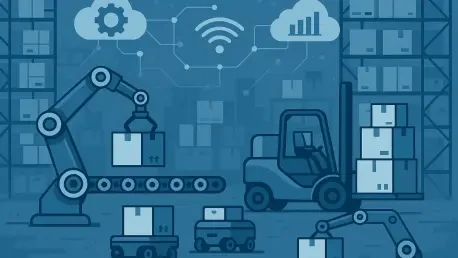Harnessing automation in supply chain operations reflects an industry actively shifting towards meeting heightened demands for efficiency, precision, and speed. The global economy today thrives on quick, flawless deliveries, pressing businesses to reconsider traditional methods. This analysis explores the role of emerging technologies transforming various facets of the supply chain, from storage to shipping, while identifying key trends and projecting future opportunities.
Unveiling the Landscape of Automation in Supply Chains
Automation is redefining the landscape of supply chain operations, presenting opportunities for both e-commerce giants and traditional businesses alike. Companies embrace automation not merely as a trend but as a strategic maneuver crucial for competing in a fast-paced global market. The journey through decades of manual processes to advanced automation illustrates this transformative shift. Beginning with computer systems optimizing logistics, the progression includes Automated Storage and Retrieval Systems (AS/RS), robotic picking solutions, and more recently, innovations like delivery drones and autonomous vehicles.
Exploring Cutting-Edge Technologies and Providers
Revolutionizing Storage Solutions
The adoption of Automated Storage and Retrieval Systems has emerged as a key development in supply chain optimization. Notable companies such as Boxman and Autostore are spearheading advancements in this sector. Boxman’s innovative overhead crane systems maximize spatial efficiency, while Autostore’s cube-based storage solutions promise high-density storage with reduced energy consumption. These systems significantly decrease operational costs and accelerate delivery times, thus playing a critical role in modern logistics.
Enhancing Picking and Packing through Robotics
Automation continues to shape picking and packing activities within warehouses, providing a substantial increase in throughput and precision. Technologies such as robotic picking arms and Autonomous Mobile Robots have transitioned warehouse operations from static to dynamic, addressing diverse inventory demands with agility. Robots’ incorporation into these processes exemplifies a shift toward dynamic flexibility, though it poses challenges that require strategic management, including technology adoption hurdles and initial implementation costs.
Advancing Transportation and Last-Mile Delivery
The deployment of emerging technologies in transportation and last-mile delivery further integrates automation into logistics. Automated Transport Management Systems utilize AI to optimize routes and facilitate compliance with regulatory standards. Moreover, robotic advancements in parcel sortation and innovations in drone and autonomous vehicle deliveries streamline last-mile operations, enhancing delivery efficiency with reduced human intervention. These advancements reflect promising improvements in overall supply chain management, albeit also bringing discussions of job displacement and security concerns.
Forecasting Future Trends and Strategies
Emerging technologies such as AI-driven predictive analytics and Blockchain are poised to further alter the supply chain landscape. These innovations hold the potential for amplified transparency, security, and operational efficiency, suggesting meaningful long-term competitive advantages for adopters. This forecast emphasizes the crucial role of strategic investments and resilient system integrations in preparing businesses for future economic shifts and regulatory changes. These strategies remain essential for navigating disruptions and evolving demands.
Strategic Conclusions and Recommendations
This analysis finds automation pivotal in reshaping supply chain dynamics, enhancing businesses’ ability to meet the demands for cost-effectiveness, precision, and rapid deliveries. As the landscape of the industry evolves, companies that have strategically integrated automation systems enjoy notable improvements in operational costs, accuracy, and throughput. Reflecting on these changes, businesses are encouraged to prioritize phased technology adoption and workforce upskilling initiatives to synchronize human and machine efforts. Through proactive integration, companies fortify their positions within the competitive logistics sphere and position themselves for sustainable growth.









